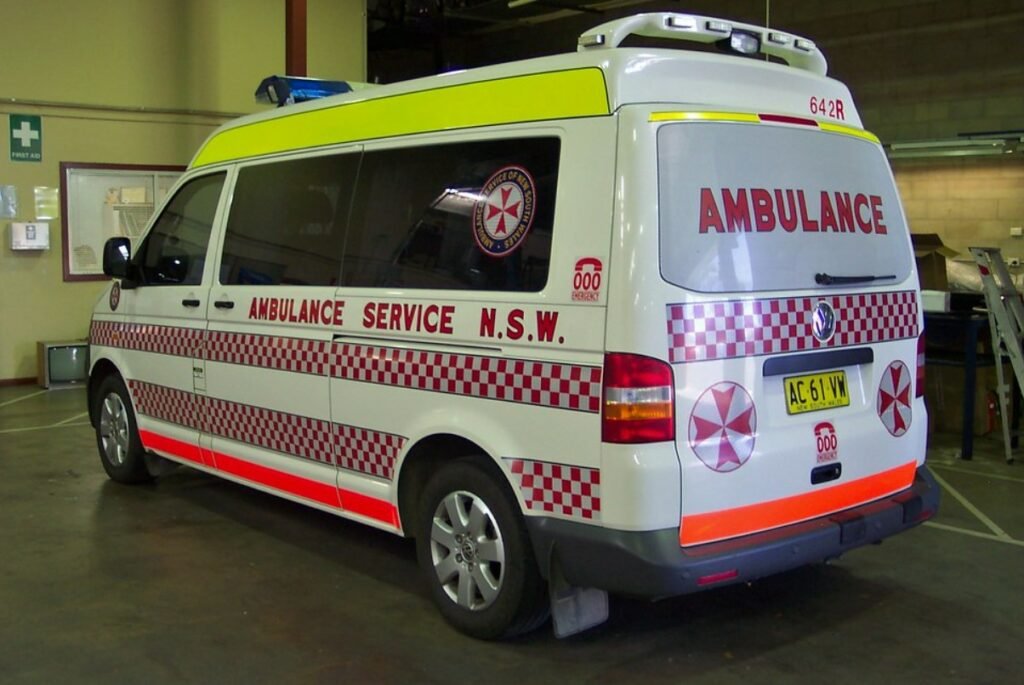A new brain scanner that can detect strokes in minutes is being tested by NSW Ambulance paramedics in a world-first trial. The device, called the Strokefinder MD100 helmet, is designed to speed up the diagnosis and treatment of stroke patients in the pre-hospital setting.
How the Strokefinder helmet works
The Strokefinder helmet uses microwave technology to scan the brain and determine whether the stroke is caused by a blood clot or a bleeding vessel. This information is crucial for deciding the best treatment option for the patient. The device is fast to operate and performs multiple brain measurements in 60 seconds.
The helmet is connected to a telehealth app that allows the paramedics to consult with neurologists at John Hunter Hospital in real time. The neurology team can review the scan results and advise the paramedics on the optimal care and destination for the patient.

The benefits of the trial
The trial, which is a collaboration between NSW Ambulance, John Hunter Hospital, and the Hunter Medical Research Institute, aims to evaluate the feasibility and effectiveness of the Strokefinder helmet in pre-hospital care. The trial is currently being conducted in the Hunter region, where paramedics attend about 1,000 stroke cases per year.
Minister for Regional Health Ryan Park said the trial could enable faster stroke diagnosis and treatment, meaning more patients stand to benefit from timely stroke interventions in the vital ‘golden hour’1.
“Stroke is a time critical emergency and is one of Australia’s biggest killers, so the earlier our paramedics and neurologists can assess and treat patients, the better the outcome,” Mr Park said.
“I am really proud our NSW Ambulance paramedics are the first in the world to use this device in the pre-hospital setting. This is a wonderful example of some of the truly collaborative projects taking place across the health system right now, where cutting-edge technology and our highly skilled hospital clinicians and frontline paramedics work together.”
The impact of the trial
NSW Ambulance Commissioner Dr Dominic Morgan said the trial was an exciting opportunity to improve the outcomes for stroke patients in NSW.
“This exciting study brings together NSW Ambulance intensive care paramedics and John Hunter Hospital neurologists, and the Hunter Medical Research Institute, to evaluate the feasibility of the Strokefinder MD100 helmet in pre-hospital care,” Dr Morgan said.
“When combined with an innovative telehealth app, our paramedics on the ground are able to consult with the neurology team in the hospital to optimise the care and overall outcome for the stroke patient.”
Acute Stroke Services Neurologist at John Hunter Hospital and study lead, neurologist Professor Chris Levi, said clinicians and researchers would work together closely to evaluate and refine how the stroke detection system and telehealth app can optimise frontline care.
“When a stroke occurs, rapid and accurate diagnosis is vital to speed up the delivery of treatment interventions and improve clinical outcomes for the patient,” Professor Levi said.
Preliminary data from the trial shows almost all patients were scanned within an hour of the Triple Zero call being made. Minister for Medical Research David Harris said these results of the trial have been remarkable considering less than five per cent of stroke patients in Australia undergo a hospital CT scan within an hour of suffering a stroke.
“Although still in the research phase, this innovation allows paramedics to rapidly scan the brain, hopefully within what’s known as the ‘golden hour’ after a stroke occurs which is when we can optimise treatment outcomes for the patient,” Mr Harris said.
The trial is expected to run for 12 months and involve about 200 patients.